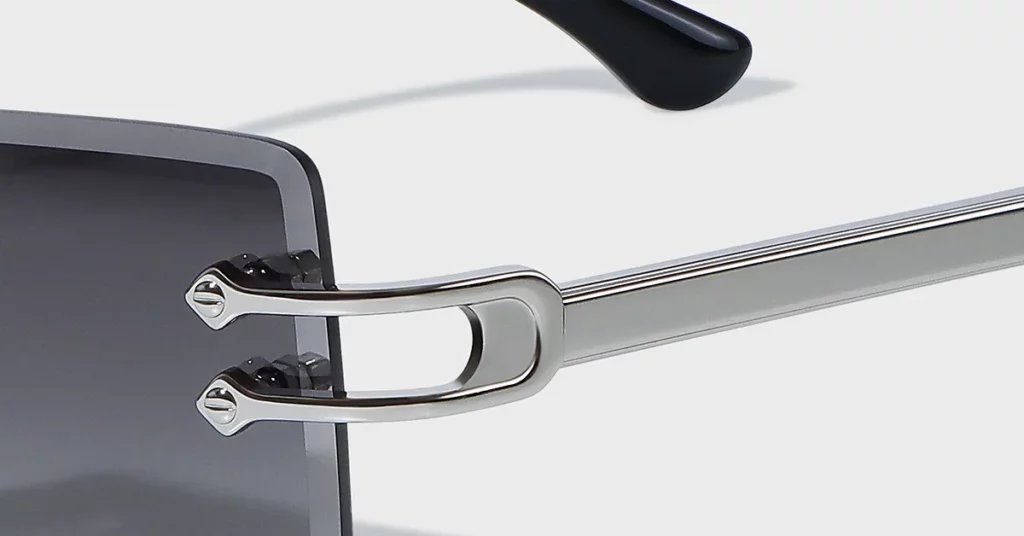Choosing the right sunglasses involves identifying your facial proportions and selecting frames that provide contrast and balance. Round faces look best with angular frames, while square faces are softened by curved styles. Heart-shaped faces need frames like aviators that draw attention downward, and oval faces can wear almost any style with confidence.

Your Style Journey Begins
Sunglasses are a direct reflection of your personality. They frame your face like a piece of art, creating an instant impression that can convey sophistication, adventure, or creativity. When you know your sunglasses complement your features perfectly, you carry yourself with a natural and powerful self-assurance.
The moment you slide on a pair of sunglasses that truly suit your face, your features appear more balanced and your best qualities are highlighted. This happens because the right frames create visual harmony. When everything looks balanced, you feel more comfortable and ready to express your authentic self.
Instead of guessing in front of endless sunglass displays, you can shop with clear direction. Having helped thousands of people find the right glasses, I always recommend you start by identifying your face shape first. This transforms an overwhelming decision into an enjoyable process of discovery.
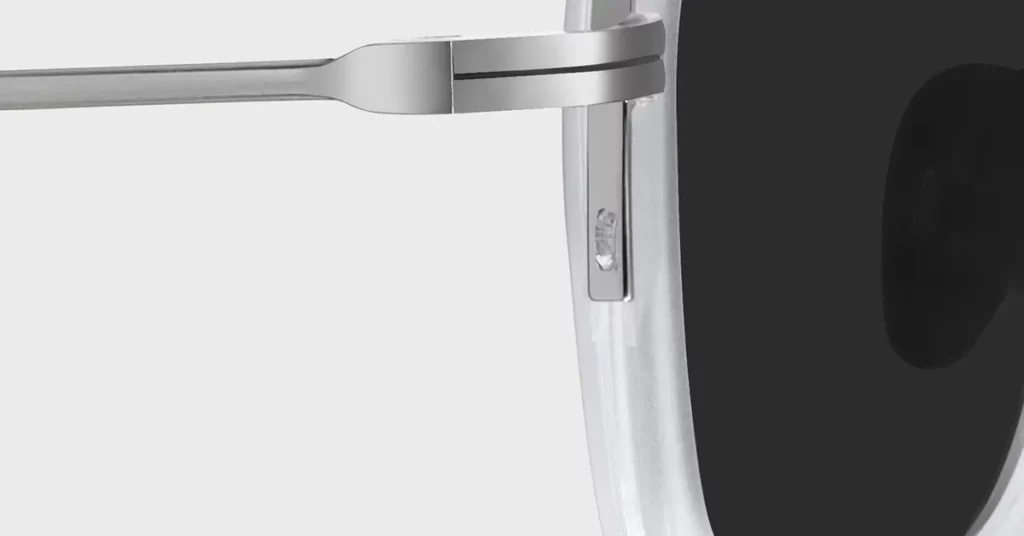
Step 1: Discover Your Unique Face Shape
To find your face shape, you need to look at the proportions of your face. You’ll examine the width of your forehead, cheekbones, and jawline, as well as the overall length of your face. This helps you understand which frame shapes will create the most flattering look for you.
The Mirror Method
Stand in front of a mirror with your hair pulled back. Use a washable marker to trace the outline of your face directly onto the mirror’s surface. Step back and look at the shape you’ve drawn. This simple outline reveals your true face shape without any distractions.
The Measurement Method
Use a flexible measuring tape to get four key dimensions of your face.
- Forehead: Measure the widest part, from temple to temple.
- Cheekbones: Measure across the widest point of your cheekbones.
- Jawline: Measure from the tip of your chin to the point just below your ear, then double it.
- Face Length: Measure from the center of your hairline down to the tip of your chin.
Compare these measurements to see which features are widest and how they relate to each other.
Good to Know: Real faces rarely fit into one perfect category. You might have the jawline of a square shape but the cheekbones of a round shape. This is completely normal. Focus on your most prominent features instead of forcing a perfect match.
The 7 Common Face Shapes
- Oval Face: Your face is longer than it is wide, with a forehead that is slightly wider than your gently curved jaw. Your cheekbones are the widest part of your face, creating naturally balanced proportions.
- Round Face: Your face has similar width and length with soft, curved lines. Your cheekbones are the widest part, and your jawline is rounded without sharp angles, creating a gentle appearance.
- Square Face: You have a strong, angular jawline. Your forehead, cheekbones, and jaw are all very similar in width. The sides of your face are straight, and your jawline has a defined, sharp angle.
- Heart-Shaped Face: Your forehead and cheekbones are broad, narrowing to a slender, often pointed chin. This creates a distinct inverted triangle look, with the widest part of your face at the top.
- Oblong Face: Your face is noticeably longer than it is wide. Your forehead, cheekbones, and jawline have similar widths. The overall shape is rectangular but with softer, curved corners.
- Diamond Face: You have a narrow forehead and jawline, with wide, high cheekbones being the most prominent feature. This creates a striking diamond silhouette, which is the rarest of face shapes.
- Triangle Face: Your forehead is narrow and widens to a broad, strong jawline. The jaw is the widest part of your face, creating a base-down triangle appearance.

Step 2: Master Flawless Style with Contrast & Proportion
The single most important rule is to choose frames that contrast with your face shape, not match it. This creates visual balance and keeps your features from being overshadowed. If you match your frames to your face shape, you risk exaggerating those same features.
Angular frames work magic on round faces because their sharp lines provide the structure that soft facial curves lack. Rectangle and square frames add definition and create the illusion of a longer, more sculpted face. The contrast is both striking and incredibly flattering.
In the same way, angular faces like square or diamond shapes look stunning in softer, curved frames. Round and oval styles balance a strong jawline or prominent cheekbones without competing against them. The gentle curves provide a beautiful counterpoint to your sharp features, creating harmony.
Getting the Scale Just Right
Beyond shape, the size of your frames must be in proportion to your face. Frames that are too small will make your face appear larger, while frames that are too large can overwhelm your features. Your frame width should roughly match the width of your face at your cheekbones.
The right pair of sunglasses should feel like a natural extension of your face. This harmony happens when the frame shape, size, and proportion all work together perfectly. When you achieve this, people will notice how great you look, not just how great your sunglasses look.
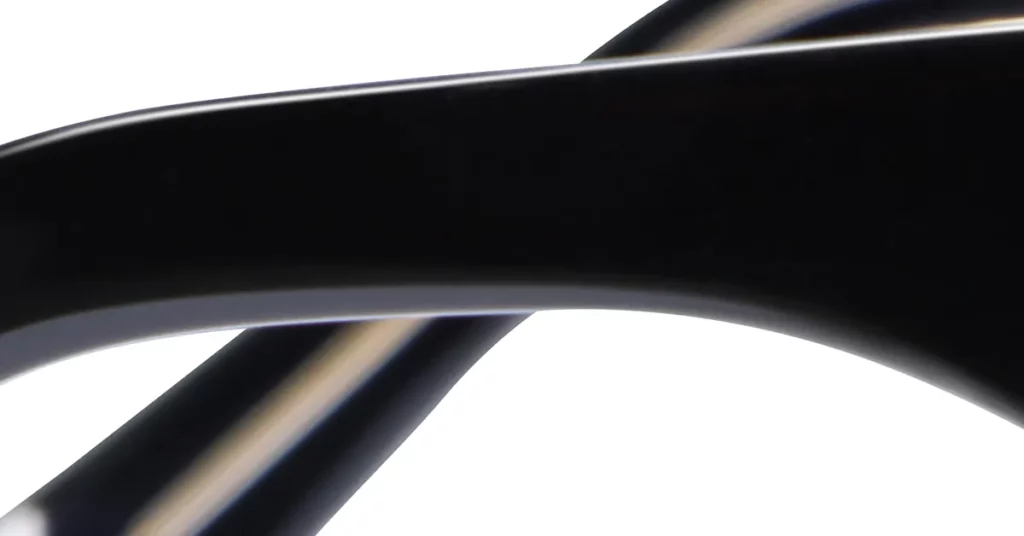
Step 3: The Ultimate Sunglass Matchmaker
For the Round Face: Create Definition
Your goal is to add structure and elongate your face. Your soft features are the perfect canvas for bold, architectural frames that add definition and create elegant lines.
Frames to Love:
- Rectangular Frames
- Square Frames
- Geometric Shapes
- Cat-Eye Styles
These angular shapes add sharp corners and straight lines that provide structure and visual contrast to your soft curves. They draw the eye vertically, making your face appear longer and more sculpted.
For Example: A classic wayfarer with its distinct rectangular shape creates the perfect contrast for a round face. Cat-eye frames are also an excellent choice, as they sweep upward to lift your features and add definition.
For the Square Face: Soften Your Features
With a strong, angular face, your goal is to add softness and create harmony. Your defined jawline is an asset, and curved frames will balance it without hiding it, adding an approachable warmth.
Frames to Love:
- Round Frames
- Oval Frames
- Aviator Styles
The gentle, flowing lines of these frames provide a beautiful counterpoint to your face’s natural geometry. They soften your sharp features, allowing them to appear refined rather than harsh. This balance between strength and softness is incredibly attractive.

For the Oval Face: Embrace Your Freedom
Because your facial proportions are naturally balanced, you have the freedom to wear almost any frame shape successfully. This allows you to choose sunglasses based purely on your personal style and what you love.
Frames to Love:
- Wayfarers
- Cat-Eyes
- Aviators
- Round or Oversized Styles
Helpful Tip: While you can wear almost any shape, it’s still important to get the proportion right. Choose frames that are as wide as or slightly wider than the broadest part of your face. This ensures your sunglasses look perfectly balanced.
For the Heart-Shaped Face: Balance Your Features
For your heart-shaped face, you’ll want frames that draw attention downward, adding visual weight to the lower half of your face. This creates a beautiful sense of symmetry with your wider forehead.
Frames to Love:
- Aviator Frames
- Round Styles
- Frames with Bottom-Heavy Details
Key Benefit: Aviators are a perfect match because their teardrop shape is wider at the bottom, which naturally balances a narrower chin. Frames with thicker lower rims or decorative details also draw the eye downward, creating perfect harmony.
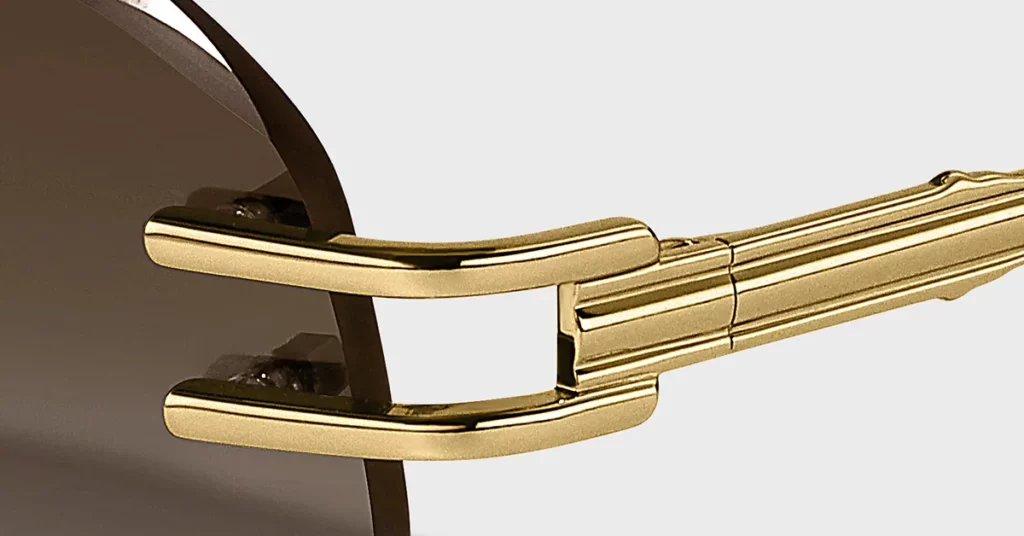
For the Oblong Face: Add Width
Since your face is longer than it is wide, you should look for frames that create an illusion of width. Frames with more height and horizontal emphasis will make your elegant features appear more balanced.
Frames to Love:
- Oversized Frames
- Wraparound Styles
- Taller Frames with Decorative Temples
These larger, bolder styles break up the vertical lines of your face. They create horizontal emphasis and draw attention to your eyes, not the length of your face. Decorative temples add width to the sides, creating broader proportions.
For the Diamond Face: Highlight Your Eyes
With your dramatic, high cheekbones, you should choose frames that accentuate your eyes and soften your angular features. Your goal is to draw attention upward to create balance.
Frames to Love:
- Cat-Eye Frames
- Oval Styles
- Rimless Frames
Cat-eye styles are fantastic because their upward sweep complements your cheekbones perfectly. Frames with a prominent or decorative browline are also a great choice, as they draw the eye upward and make your eyes the center of attention.

Step 4: Fine-Tune Your Choice
Finding Your Perfect Fit
A great fit is essential for all-day comfort. Your sunglasses should feel secure without pinching or putting pressure on your face.
- The Bridge Check: The bridge of the sunglasses should rest securely on your nose without sliding. If it’s too tight, it will pinch; too wide, and the glasses will slip.
- The Temple Test: The arms of the glasses should rest lightly over your ears without feeling tight. They should not press into the sides of your head.
- The Smile Test: When you smile, the frames should not touch your cheeks. If they do, they will constantly need adjusting and become uncomfortable.
Choosing Colors That Pop
The right frame color will complement your skin tone and hair color, making your features stand out.
Good to Know: To find your skin tone, look at the veins on the inside of your wrist. Blue or purple veins indicate a cool undertone, while greener veins suggest a warm undertone. If you can’t tell, you likely have a neutral tone and can wear most colors.
- For Cool Tones: Black, silver, gray, blue, and purple frames will look fantastic.
- For Warm Tones: Tortoiseshell, gold, brown, coral, and peach frames will enhance your natural coloring.
Selecting Materials for Your Lifestyle
Frame material affects everything from comfort to durability. Choosing the right one depends on how you’ll be wearing your sunglasses.
| Material | Best For | Key Features |
| Acetate | Everyday elegance, classic styles | Rich colors, premium feel, durable and adjustable |
| Metal | Modern, lightweight look | Sleek profile, very durable, often hypoallergenic |
| Plastic | Active lifestyles, sports | Impact-resistant, lightweight, flexible and secure fit |
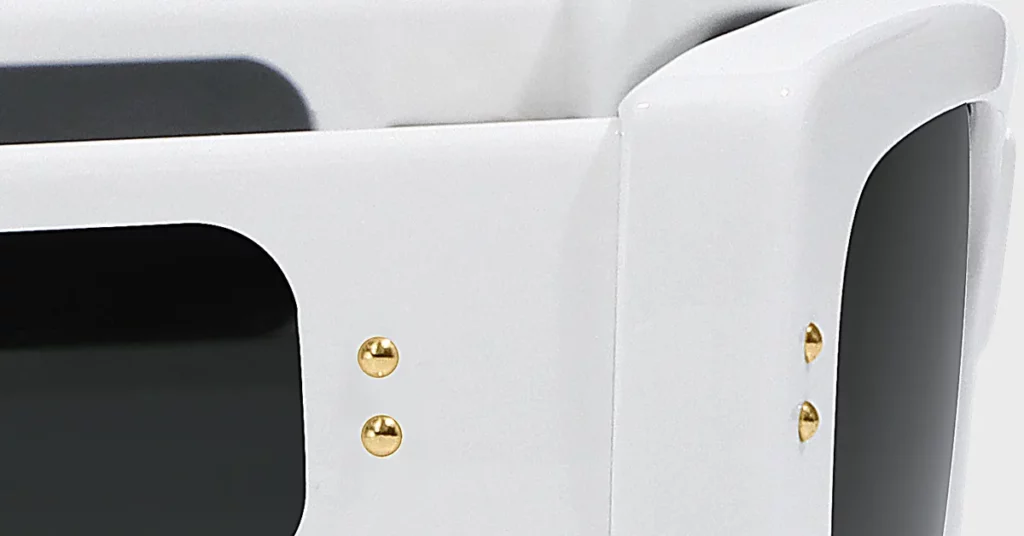
Step 5: Shop with Total Confidence
Lens quality is just as important as the frame style. High-quality lenses protect your eyes and provide superior visual clarity, which is why investing in good eyewear is always a smart choice.
Lenses and Protection
For Your Safety: Never compromise on UV protection. Your sunglasses must block 99-100% of UVA and UVB rays. Look for a label that says UV400 or 100% UV protection. Dark lenses without proper UV protection can be more dangerous than no sunglasses at all.
Key Benefit: Polarized lenses are designed to cut glare from reflective surfaces like water, snow, and pavement. This reduces eye strain and provides safer, crisper vision, making them ideal for driving and outdoor activities.
Lens tints also play a role in what you see.
- Gray Lenses: Reduce brightness without distorting colors. Perfect for everyday use.
- Brown Lenses: Enhance contrast and depth perception. Great for variable light.
- Green Lenses: Offer high contrast while preserving color balance. Popular for sports.
How to “Try On” with Confidence
Modern tools make it easy to find the perfect pair, whether you’re shopping online or in a store. Many websites now offer virtual try-on tools that use your camera to show you how frames will look on your face in real-time.
When you’re trying on frames in a store, check your reflection from multiple angles. Walk around and look up and down to make sure they stay securely in place. A well-made frame will feel solid, with smooth hinges and a flawless finish.
Helpful Tip: Quality sunglasses are an investment in your comfort and long-term eye health. Better materials, superior optical clarity, and durable construction mean they will last for years and provide better protection.
Ultimately, the right sunglasses are the ones that make you feel amazing. Beyond all the technical rules, trust your instincts. If you put on a pair and feel a surge of confidence, you’ve likely found your perfect match.

Conclusion
You are now ready to choose sunglasses that are a true extension of your personal style. By understanding your face shape and the principles of contrast and proportion, you can move past the guesswork. Have fun with the process and confidently select a pair that makes you look and feel fantastic.
Frequently Asked Questions
1. Can I wear a style I love even if it’s not “recommended”?
Absolutely! These are guidelines, not rules. Personal style and confidence are most important. If you love how a pair of sunglasses makes you feel, wear them.
2. What if my face is a mix of two different shapes?
This is very common. Focus on your most prominent features and look at recommendations for both shapes. Trying on different styles is the best way to see what works for your unique face.
3. What’s the real difference between a $20 and a $200 pair?
Higher-priced sunglasses typically offer superior lens quality with better optical clarity and UV protection. They also use premium materials for greater durability and comfort.
4. How do I make sure sunglasses I buy online will fit?
Use virtual try-on tools and carefully check the frame measurements listed on the product page. Always buy from a retailer that offers a good return policy just in case.
5. Should I prioritize shape or features like UV protection?
Eye protection should always come first. Start by filtering for sunglasses that offer 100% UV protection and polarization if you need it. Then, choose your favorite style from those options.

